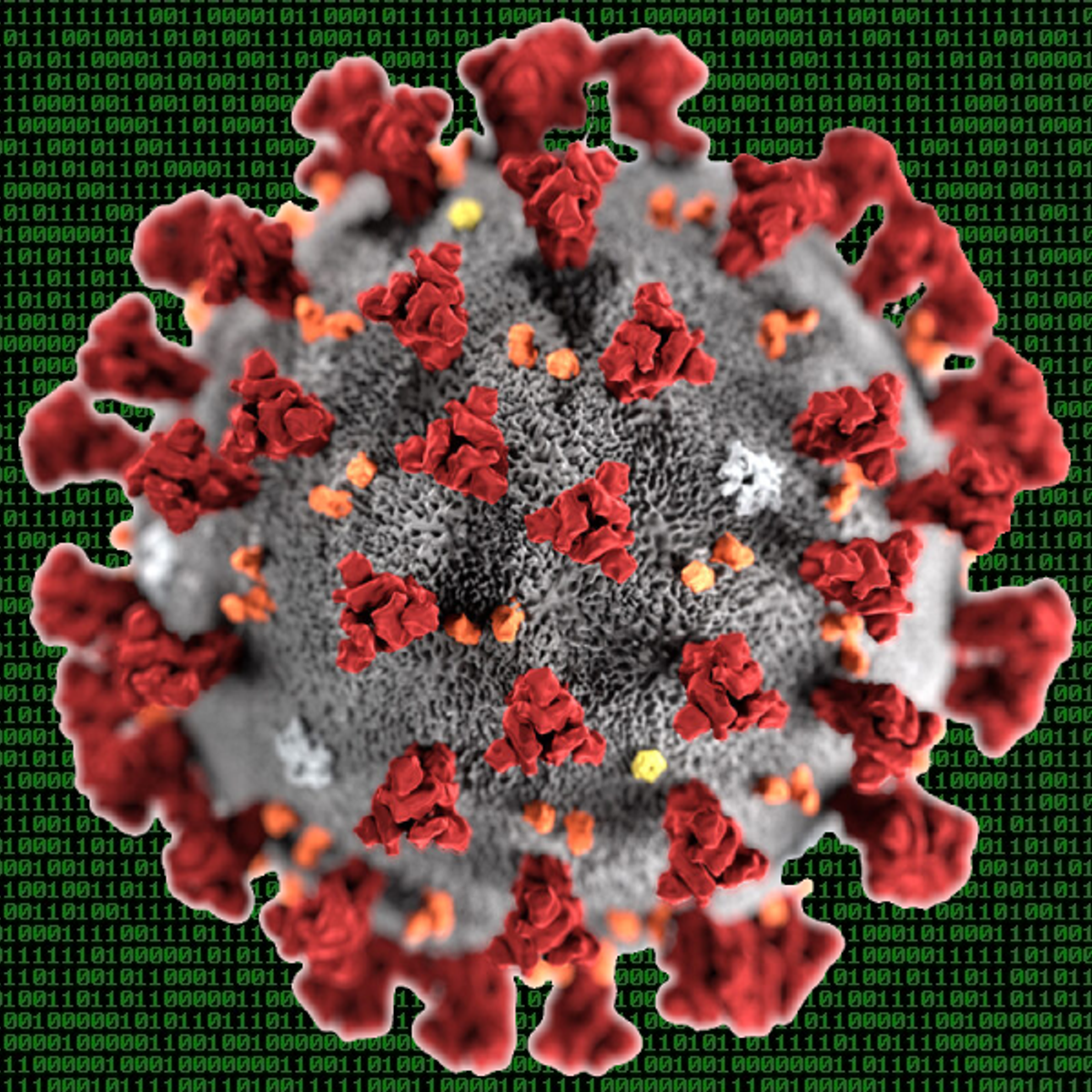
In this course, you will follow in the footsteps of the bioinformaticians investigating the COVID-19 outbreak by assembling the SARS-CoV-2 genome. Whether you’re new to the world of computational biology, or you’re a bioinformatics expert seeking to learn about its applications in the COVID-19 pandemic, or somewhere in between, this course is for you! As you go through this journey, we will introduce and explain genomic concepts and give you many opportunities to practice your skills, and we will provide a series of problems with gradually increasing complexity. This first course will only discuss the assembly of the SARS-CoV-2 genome, but future courses in this series will explore follow-up bioinformatics analyses used in the COVID-19 pandemic.
What's inside
Syllabus
Week 1
In Chapter 1, we will first travel back in time to learn about the history of the SARS outbreak of 2003. Next, we will travel to late 2019 to learn about the origins of SARS-CoV-2, a novel virus that wreaked havoc upon the world during the COVID-19 pandemic. Lastly, we will explore the biology behind this mysterious virus as we take our first steps towards Hacking COVID-19.
Read more
Syllabus
Good to know
Save this course
Reviews summary
Course on covid-19 pathogen detection
Activities
Review high school biology
Show steps
Refresh foundatonal biology to prepare for course materials
Browse courses on
Biology
Show steps
-
Review major biology textbooks
-
Practice genetics problems
Follow the online Bioinformatics Tutorial Series by the European Bioinformatics Institute
Show steps
These tutorials will provide you with a comprehensive overview of bioinformatics concepts.
Browse courses on
Bioinformatics
Show steps
-
Watch the introductory videos on bioinformatics.
-
Complete the interactive exercises.
-
Read the provided articles and resources.
Read the book "Bioinformatics for Beginners"
Show steps
This introductory book will help you develop a solid foundation in bioinformatics to better prepare for the course.
View
Bioinformatics: A Practical Guide To The...
on Amazon
Show steps
-
Define bioinformatics and discuss its importance.
-
Explain the role of DNA and RNA in bioinformatics.
-
Describe the different types of bioinformatics databases.
Six other activities
Expand to see all activities and additional details
Show all nine activities
Complete the interactive exercises on the NCBI website
Show steps
These exercises will provide you with the practical experience you need to master the concepts of bioinformatics.
Browse courses on
NCBI
Show steps
-
Navigate the NCBI website and search for a specific gene.
-
Use the NCBI BLAST tool to align two sequences.
-
Create a phylogenetic tree using the NCBI TreeView tool.
Attend a Bioinformatics Workshop at a local university or research institution
Show steps
This is an excellent opportunity to learn from experts in the field and network with other bioinformatics professionals.
Browse courses on
Bioinformatics
Show steps
-
Research upcoming bioinformatics workshops in your area.
-
Register for a workshop that aligns with your interests.
-
Attend the workshop and actively participate in the activities.
Write a blog post about your experience learning bioinformatics
Show steps
This activity will help you reflect on what you have learned and share your knowledge with others.
Browse courses on
Bioinformatics
Show steps
-
Describe the challenges you faced while learning bioinformatics.
-
Share your tips for other students who are interested in learning bioinformatics.
-
Discuss the applications of bioinformatics in the real world.
Develop a bioinformatics software tool to analyze a specific biological dataset
Show steps
This project will allow you to apply your bioinformatics skills to solve a real-world problem.
Browse courses on
Bioinformatics
Show steps
-
Identify a biological dataset that you would like to analyze.
-
Design and develop a software tool to analyze the dataset.
-
Test and validate your software tool.
Volunteer as a mentor for other students in the bioinformatics course
Show steps
This experience is a great opportunity to reinforce your understanding of the material and help others succeed.
Browse courses on
Bioinformatics
Show steps
-
Meet with other students and provide guidance on bioinformatics concepts.
-
Assist students with completing assignments and projects.
-
Create study materials and resources for other students.
Participate in the International Gene Sequence Analysis Competition (iGSA)
Show steps
This is a great way to test your skills and compete with other bioinformatics students from around the world.
Browse courses on
Bioinformatics
Show steps
-
Register for the iGSA competition.
-
Analyze the provided gene sequences.
-
Submit your results and compete for prizes.
Review high school biology
Show steps
Refresh foundatonal biology to prepare for course materials
Browse courses on
Biology
Show steps
- Review major biology textbooks
- Practice genetics problems
Follow the online Bioinformatics Tutorial Series by the European Bioinformatics Institute
Show steps
These tutorials will provide you with a comprehensive overview of bioinformatics concepts.
Browse courses on
Bioinformatics
Show steps
- Watch the introductory videos on bioinformatics.
- Complete the interactive exercises.
- Read the provided articles and resources.
Read the book "Bioinformatics for Beginners"
Show steps
This introductory book will help you develop a solid foundation in bioinformatics to better prepare for the course.
View
Bioinformatics: A Practical Guide To The...
on Amazon
Show steps
- Define bioinformatics and discuss its importance.
- Explain the role of DNA and RNA in bioinformatics.
- Describe the different types of bioinformatics databases.
Complete the interactive exercises on the NCBI website
Show steps
These exercises will provide you with the practical experience you need to master the concepts of bioinformatics.
Browse courses on
NCBI
Show steps
- Navigate the NCBI website and search for a specific gene.
- Use the NCBI BLAST tool to align two sequences.
- Create a phylogenetic tree using the NCBI TreeView tool.
Attend a Bioinformatics Workshop at a local university or research institution
Show steps
This is an excellent opportunity to learn from experts in the field and network with other bioinformatics professionals.
Browse courses on
Bioinformatics
Show steps
- Research upcoming bioinformatics workshops in your area.
- Register for a workshop that aligns with your interests.
- Attend the workshop and actively participate in the activities.
Write a blog post about your experience learning bioinformatics
Show steps
This activity will help you reflect on what you have learned and share your knowledge with others.
Browse courses on
Bioinformatics
Show steps
- Describe the challenges you faced while learning bioinformatics.
- Share your tips for other students who are interested in learning bioinformatics.
- Discuss the applications of bioinformatics in the real world.
Develop a bioinformatics software tool to analyze a specific biological dataset
Show steps
This project will allow you to apply your bioinformatics skills to solve a real-world problem.
Browse courses on
Bioinformatics
Show steps
- Identify a biological dataset that you would like to analyze.
- Design and develop a software tool to analyze the dataset.
- Test and validate your software tool.
Volunteer as a mentor for other students in the bioinformatics course
Show steps
This experience is a great opportunity to reinforce your understanding of the material and help others succeed.
Browse courses on
Bioinformatics
Show steps
- Meet with other students and provide guidance on bioinformatics concepts.
- Assist students with completing assignments and projects.
- Create study materials and resources for other students.
Participate in the International Gene Sequence Analysis Competition (iGSA)
Show steps
This is a great way to test your skills and compete with other bioinformatics students from around the world.
Browse courses on
Bioinformatics
Show steps
- Register for the iGSA competition.
- Analyze the provided gene sequences.
- Submit your results and compete for prizes.
Career center
Bioinformatician
Computational Biologist
Medical Scientist
Physician
Genetic Counselor
Researcher
Epidemiologist
Biomedical Engineer
Microbiologist
Virologist
Pharmacist
Data Analyst
Software Engineer
Computer Scientist
Biostatistician
Reading list
Share
Similar courses
OpenCourser helps millions of learners each year. People visit us to learn workspace skills, ace their exams, and nurture their curiosity.
Our extensive catalog contains over 50,000 courses and twice as many books. Browse by search, by topic, or even by career interests. We'll match you to the right resources quickly.
Find this site helpful? Tell a friend about us.
We're supported by our community of learners. When you purchase or subscribe to courses and programs or purchase books, we may earn a commission from our partners.
Your purchases help us maintain our catalog and keep our servers humming without ads.
Thank you for supporting OpenCourser.



